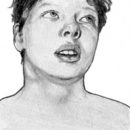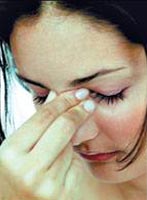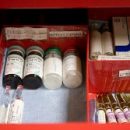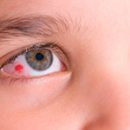What is diverticulitis? What are the symptoms of diverticulita? How is the treatment of diverticulitis? Answers to these questions you will find in the article.
Content
Diverticulitis, symptoms of diverticulitis
Diverticulit - Inflammation of one or more diverticuls. Diverticulitis is more common in people over 40 years old, although in severe form possible in patients of any age. Among people under 50 years old who need operational treatment with diverticulite, men are three times more than women; In the group of persons over 70 years old, women in numbers exceed men three times.
Ordinary initial symptoms - pain, pain in palpation (usually in the lower left side of the abdomen) and an increase in body temperature.
If a doctor knows that a person has a diverticulosis, the diverticulite can be diagnosed almost entirely on the basis of symptoms. Barium introduction and subsequent radiography allows you to confirm the diagnosis, but the study can provoke damage. Inflammation in the diverticulite can lead to the formation of pathological messages (fistulas) between the colon and other bodies. In most cases, fistulas are formed between the sigmoid intestine and the bladder and are more common in men than in women, but the surgical removal (extirpation) of the uterus increases the risk of fistula in women. In its formation, intestinal contents, including bacteria, enters the bladder and causes an infectious process in urinary tract. Swistulas can develop between thick and small intestines, uterus, vagina, abdominal wall or even the thigh or infancy.
Other possible complications of diverticulite - inflammation of the surrounding tissues, the spread of inflammation in the intestinal wall, gap the wall of the diverticula (perforation), abscess, inflammation of the abdominal cavity (peritonitis), bleeding and intestinal obstruction.
Treatment of diverticulitis
Light diverticulitis can be treated at home. Recommended peace, diet mainly of liquid dishes and taking antibiotics. Symptoms usually disappear quickly. After several days of treatment, a person can go to gentle, with low content of vegetable fibers, a diet and take a daily seed of the plantain. In a month in the diet include products with a high content of vegetable fibers. Patients with pain in a certain place of belly, increasing body temperature and other signs of severe infectious process or complications, as a rule, hospitalized. They are prescribed intravenous administration of fluid and antibiotics, bedding; Patients are forbidden to eat and drink until the symptoms appear. If the state does not improve, the question of the operation is solved, especially if the pain in the abdomen and the increase in body temperature increases. Approximately 20% of patients who have diverticulite need surgical treatment due to the fact that their condition is not improved; Of these, 70% have a strong pain and signs of inflammation, others - bleeding, frying education or intestinal obstruction.
When massive bleeding occurs, its source is determined by introducing a contrast agent in artery, which supply the thick intestine, then reducing x-ray examination, called angiography. Introduction of vasopressin (medication that narrows the artery) can stop bleeding, but it is potentially dangerous, especially in old age. In some cases, bleeding recurrences within a few days, which requires operational intervention. Removing the affected intestinal department is possible only if the source of bleeding is installed. Otherwise, a much majority of the intestines are removed - such an operation is called subtotal colostomy. If bleeding is stopped (or significantly reduced) without treatment, the best way to determine its cause is a colonoscopy.  Sometimes, for the treatment of diverticulitis, the doctor recommends an operation, although a person has no signs of inflammation or complications. This happens in cases where the risk of severe complications, which will require urgent surgical intervention, and the preventive operation is a simpler and most secure treatment method. Emergency operation is necessary for patients who are hospitalized due to perforation (bodybuction) of the intestine and peritonitis. The surgeon, as a rule, removes the damaged segment of the intestine and creates a message between the colon and the skin surface, called the worst. Dissected intestinal ends are stitched during the subsequent operation, and closed closet.
Sometimes, for the treatment of diverticulitis, the doctor recommends an operation, although a person has no signs of inflammation or complications. This happens in cases where the risk of severe complications, which will require urgent surgical intervention, and the preventive operation is a simpler and most secure treatment method. Emergency operation is necessary for patients who are hospitalized due to perforation (bodybuction) of the intestine and peritonitis. The surgeon, as a rule, removes the damaged segment of the intestine and creates a message between the colon and the skin surface, called the worst. Dissected intestinal ends are stitched during the subsequent operation, and closed closet.









